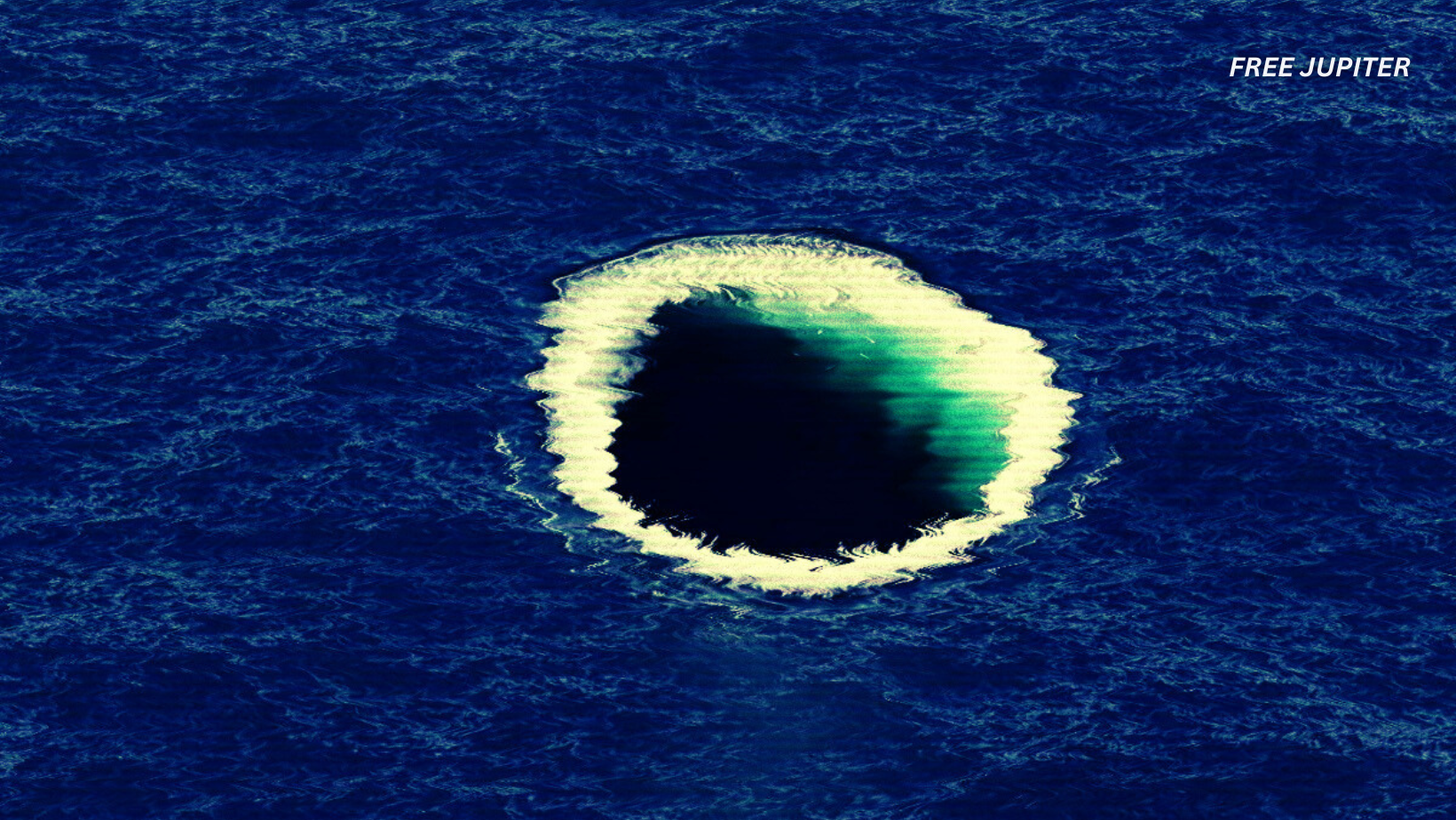The so-called Gravity Hole in the Indian Ocean has long intrigued scientists, researchers, and adventurers alike. This unusual phenomenon challenges conventional understanding, sparking curiosity about its origins, effects, and potential significance. While theories abound, the exact nature of this gravitational anomaly remains elusive. This article explores the mysteries surrounding the Gravity Hole and its broader implications.
Understanding the Gravity Hole
Despite the name, this phenomenon is not an actual void in space but a region where gravitational forces appear to fluctuate in unexpected ways. In certain parts of the Indian Ocean, gravity behaves differently, creating a deviation from the norm that has perplexed experts for decades.
Investigating the Anomaly: What Causes It?
Researchers have proposed multiple explanations to make sense of this gravitational inconsistency. Some of the most widely discussed theories include:
1. Submerged Geological Features
One possibility involves massive geological formations hidden beneath the ocean floor. Variations in mass distribution could influence gravitational pull in these regions, leading to detectable anomalies. Large-scale subterranean structures, such as dense rock formations or deep ocean trenches, might be responsible.
2. Oceanic Movements and Tidal Influence
Another theory suggests that dynamic ocean currents and tidal movements play a role. The shifting of enormous water masses could subtly alter local gravitational forces, creating transient fluctuations that give rise to the phenomenon.
3. Magnetic Field Interactions
Some researchers believe that Earth’s magnetic field may contribute to the anomaly. Interactions between deep-seated magnetic forces and external influences might generate gravitational variations, further complicating the region’s behavior.
Read more: Iceberg Breaks Off Of Antarctica, Revealing Strange Tentacled Creatures Hidden Underneath
Why the Gravity Hole Matters
The significance of this gravitational anomaly extends far beyond scientific curiosity. It has potential consequences in various domains, including environmental studies, navigation, marine ecosystems, and fundamental physics.
1. Environmental and Climatic Impact
Oceanic circulation patterns are heavily influenced by gravitational forces, shaping global climate systems. A disruption in these patterns can impact weather conditions, potentially leading to extreme climatic events. Understanding gravitational anomalies in the ocean can provide deeper insights into their role in climate change, helping scientists refine climate models and predict shifts in global weather patterns.
Additionally, the interaction between gravity and ocean currents affects the distribution of warm and cold waters, which in turn influences precipitation patterns, storm formations, and even monsoon cycles. Studying this phenomenon may help in developing better strategies for disaster preparedness in regions affected by extreme weather.
2. Navigational Considerations
For sailors, pilots, and researchers, gravitational inconsistencies pose significant navigational challenges. Subtle variations in gravity can lead to minor shifts in navigation instruments, affecting GPS accuracy and increasing the need for manual corrections. While modern navigation systems are highly sophisticated, even slight deviations caused by gravitational anomalies can be consequential during long voyages across the ocean.
Historically, unexplained compass fluctuations and course deviations have been reported by seafarers navigating the Indian Ocean. Investigating these anomalies further may lead to improvements in navigational technology, ensuring greater accuracy for both maritime and aerial travel.
3. Influence on Marine Life
Changes in ocean currents, driven in part by gravitational fluctuations, can have profound effects on marine ecosystems. Ocean currents play a critical role in distributing nutrients, oxygen, and temperature-regulated water masses. Even slight disruptions in these currents may impact fish migration, breeding patterns, and the overall biodiversity of the region.
For example, if gravitational anomalies alter deep-sea currents, it could lead to changes in the availability of plankton and other microscopic organisms that form the base of the marine food chain. This could, in turn, affect the population of larger marine species, potentially disrupting commercial fisheries and marine conservation efforts. Understanding these variations may help in crafting sustainable strategies for ocean resource management.
4. Advancing Scientific Knowledge
Beyond its immediate impacts, studying the Gravity Hole provides crucial insights into fundamental principles of physics and planetary science. Gravitational anomalies offer a rare opportunity to study the Earth’s internal composition, as variations in gravity can indicate differences in subterranean mass and density.
These studies contribute to a better understanding of plate tectonics, seafloor topography, and even the movement of magma beneath the Earth’s crust. Moreover, gravitational anomalies in the ocean provide real-world test cases for scientific theories related to gravity, potentially influencing advancements in space exploration and astrophysics.
Read more: Secret CIA Files Say That The Ark of the Covenant Does Really Exist And They Know Its Location
Encounters with the Gravity Hole
Numerous accounts from navigators, researchers, and historians have highlighted experiences linked to this gravitational oddity.
Captain Amelia’s Log
During a research voyage, Captain Amelia reported unusual disturbances in navigational instruments while passing through a known anomaly zone. Readings fluctuated inexplicably, leading to temporary confusion before adjustments were made. Crew members also described an eerie sensation as if the ship’s movement had momentarily become unpredictable. The phenomenon lasted only a short while, but it was enough to leave a lasting impression on the seasoned captain and her team.
The Vanished Expedition
A 19th-century expedition set sail to map the Indian Ocean but never returned. Some speculate that gravitational anomalies might have played a role in their mysterious disappearance, though concrete evidence remains elusive. Reports from other sailors around the same period suggest strange shifts in compass readings and unexplained navigational errors near the suspected anomaly zone. Some theorists believe that these anomalies could have disoriented the expedition, leading them into treacherous waters or prolonged exposure to unpredictable conditions that ultimately sealed their fate.
Modern-Day Satellite Observations
With the advent of satellite technology, gravitational variations in the Indian Ocean have been monitored more closely. Satellites measuring gravitational shifts have detected unusual patterns in the region, confirming that the anomaly is not merely anecdotal but a scientifically measurable occurrence. These findings have prompted further research, with scientists analyzing whether the anomaly changes over time or remains relatively stable.
Read more: Underwater Robot Captures A Sunken Container, Researchers Turn Pale When They Open It
Frequently Asked Questions
1. What causes the Gravity Hole? The exact cause is still under investigation. Scientists suggest that geological structures, oceanic movements, and magnetic field interactions are likely contributors. Each of these factors plays a role in altering local gravitational forces, though no single explanation has been definitively proven.
2. How large is this gravitational anomaly? The Gravity Hole spans a considerable area of the Indian Ocean, but its dimensions are not fixed. Studies indicate that gravitational variations extend across a broad region, fluctuating over time due to geological and oceanic changes.
3. Can it affect ships and aircraft? Yes, though the effects are generally minor. Ships and aircraft passing through the region may experience slight deviations in navigational instruments, requiring course corrections. However, these anomalies do not pose significant dangers to modern vessels equipped with advanced navigation technology.
4. Are there similar anomalies elsewhere? Yes, other gravitational anomalies exist across the world, both on land and in the ocean. Notable examples include the Hudson Bay gravity anomaly in Canada and other localized regions where gravitational forces deviate from expected norms.
5. Is the Gravity Hole predictable? At present, predicting gravitational fluctuations in the Indian Ocean remains challenging. Scientists continue to analyze patterns in ocean currents, geological shifts, and magnetic field changes to develop models that could enhance forecasting capabilities.
6. Does it impact marine life? Yes, but indirectly. The shifting ocean currents associated with the Gravity Hole can affect nutrient distribution, migration routes, and the availability of food sources. These changes may influence marine biodiversity, impacting fish populations and larger marine creatures that rely on stable ecological conditions.
Conclusion
The Gravity Hole in the Indian Ocean stands as one of Earth’s enduring scientific mysteries. Despite significant research efforts, many questions remain unanswered. As scientific tools and methods advance, further insights may emerge, shedding light on this fascinating anomaly. Until then, it remains a testament to the vast and unexplored complexities of our planet’s oceans.










